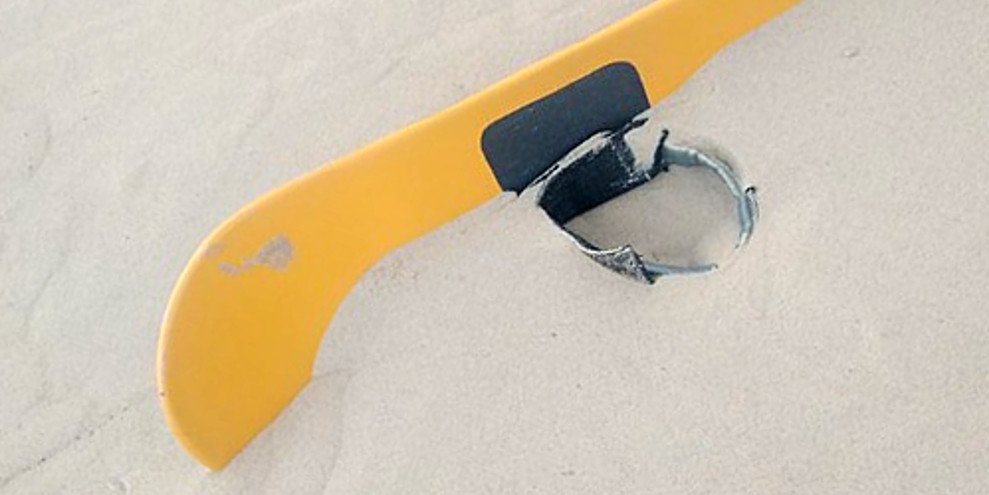Sandboarding is a thrilling adventure, but it requires a bit more special care than snowboarding.
To keep your sandboard or sandsled in top shape, you’ll need to wax it regularly—before and after each ride.
This is because the high friction from sliding down sandy slopes wears off the wax quickly. Sand is more abrasive than snow, so make sure to apply wax a soften as possible to protect your equipment.
Luckily, this type of sandboard-friendly wax is widely commercially available and even relatively easy to make at home.
As part of the Amazon Associate and eBay Partner Programme, we earn from qualifying purchases.

Why you need sandboard wax
Sandboard wax is essential for reducing friction and ensuring a smooth ride on sand. Specialized waxes are designed for different weather and terrain conditions, enhancing your sandboarding experience by providing better glide and control.
Sand is a high friction type of terrain, which means it is not very slippery. Wax ensures that your board can smoothly slide down a sand dune while speeding up your ride and ensuring that no sand particles get stuck in your board.
Compared to other types of boarding equipments, sandboards are usually with a base material that is smoother compared to the board itself (i.e. a layer of Formica or similar plastic blend). It is this layer at the base that needs to be waxed in order to reduce friction and protect the board from wearing out.
Even if you are planning to use a regular snowboard or surf board on sand, or if you wanna give sand skiing a go, waxing will help make your ride much smoother.
How to choose the best sandboard wax
When choosing the best sandboard wax, consider blends tailored for specific weather and terrain conditions.
While warm-weather surfboard wax can work, there are plenty of wax options crafted specifically for sand boarding and sand skiing.
Opt for an all-purpose blend for versatility or select a wax designed for your usual riding conditions.
Either way, using the right wax ensures smoother rides and better performance.
Sandboard wax for sale
Browse more sandboard wax for sale
How to Properly Wax a Sandboard
- Place your sandboard (or sled) on a flat surface or on the ground with the bottom side facing you.
- Rub the wax in small amounts all over the surface of your board, including the edges.
- Pick up a handful of dry sand and see if it sticks to the board. If needed, apply more wax until the sand doesn’t stick anymore. Avoid waxing any part of the board that doesn’t contact the sand.
- Repeat this waxing process every time you go down a dune, before your next ride.
You will need to repeat this waxing process every time you go down a dune, but hey – you get used to it.
As a matter of fact, it can be quite relaxing, especially if your wax has a nice scent (or if you made it yourself with pride).

Sandboard Wax F.A.Q.
What is sandboard wax made of?
Wax is essentially a blend of fats and fragrance oils.
Most commercial wax is made from paraffin (a petroleum byproduct) and can withstand most temperatures, whereas beeswax and tree resin based waxes may be better suited for lower temperature ranges.
Making your own wax is also an option and a relatively easy and straightforward procedure which can be done with common household items.
How much wax do you need to use for sandboarding?
You only need to rub the minimum amount of wax necessary to cover the base of your board (including the edges). The goal is to create an extra protective layer between your board and the sand. Don’t overdo it as this will cause your board to stick!
You know you are done when you can rub a little bit of sand on your board and it falls back to the ground. The overall waxing process should take no more than a couple of seconds.
Can you use candle wax for sandboarding?
Candle wax is essentially pure paraffin and while it works if nothing else is available, it won’t perform as well as commercial or DIY sandboard wax.
This is because pure paraffin is quite hard and (unlike beeswax) needs certain oils to be added to it in order to soften up so that it can be applied to your board.
Commercial blends are also engineered to perform better under specific weather conditions (i.e. the heat of the desert) and terrains (i.e. wet sand for coastal dunes).
Read also: Components of a sandboard

Cheri Sanders is an Arizona native, writer, and outdoor enthusiast who believes the best things in life are found off the beaten path—often with her dogs right beside her. Specializing in travel, outdoors, and beauty, Cheri chronicles the adventures of hiking the Southwest and beyond.


